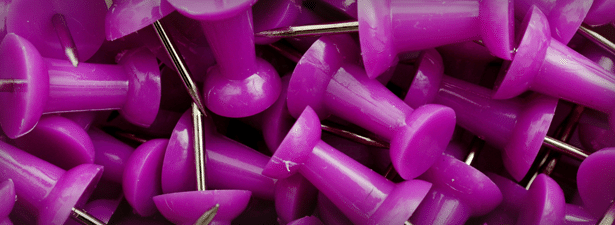
We know that social media is a fickle mistress. Thanks to advanced algorithms and already densely populated feeds, trying to get your content seen can be a difficult task. And after that content is published, it doesn’t take long for it to be buried. Generally, the half life of a socially shared link is not great, but one social network boasts a better link lifespan than the others. Spoiler alert: It’s not Facebook or Twitter.
Research recently conducted by the folks at Piqora found that because of the nature of Pinterest, links and pics posted on the site continue to enjoy engagement days and weeks after their initial post. Specifically, here are the stats they found:
40% of the clicks happen within the first day.
70% of the clicks happen within the first 2 days.
The remaining 30% clicks come all the way through 30 days and beyond.
Why is this? The folks at Piqora have an answer. Because Pinterest is based on users looking for inspiration, “Pinterest [is] as much [a] navigation and search driven network as it is a social feed driven network. This search and navigation behavior on Pinterest leads to old pins showing up in search results and driving traffic to your site.”
This is great news for brands and bloggers, but it can also cause some problems. Here are a few steps to take to make sure you’re getting the traffic you want, and that your pinnable content is up to snuff.
Check your old pins for source links.
It’s easy to forget to include source links for pins…unfortunately, this forgetfulness translates into lost potential traffic to your site. If you don’t have a huge backlog of pins created by your brand, take a look through them and see if they point to a source URL. If they don’t, simply edit them to include the correct (and appropriate) URL to lead pinners back to your site. If you do have a huge backlog, see if there are items or photos that tend to get pinned more. Then sort through those to make sure that they have a URL associated with them. Use Pinterest analytics or a third-party Pinterest analyzer to help you determine what your biggest pins are and go from there.
Resize your images.
Pinterest’s redesign alienated some brands because of the new minimum image size requirements. Make sure that you and your readers are able to pin your content directly from your site by ensuring that your images meet the new requirements. Although it’s good practice to make sure all your site’s images are ready for their Pinterest closeup, you can start by optimizing and resizing the images for your most popular posts first. Here’s a handy cheat sheet to help you sort it all out.
Optimize your descriptions for keywords.
Keywords will help users find your pins, but it can be tricky trying to figure out the right ones to use. Go back to your older pins and determine if there are better key phrases that you could be using instead. Pinterest’s new suggested keywords feature will help generate a list of possible phrases to use. Once you identify some, go back and edit your descriptions for improved visibility.
Still need some Pinterest help? Check out our Pinterest Marketing section for lots of great ideas.